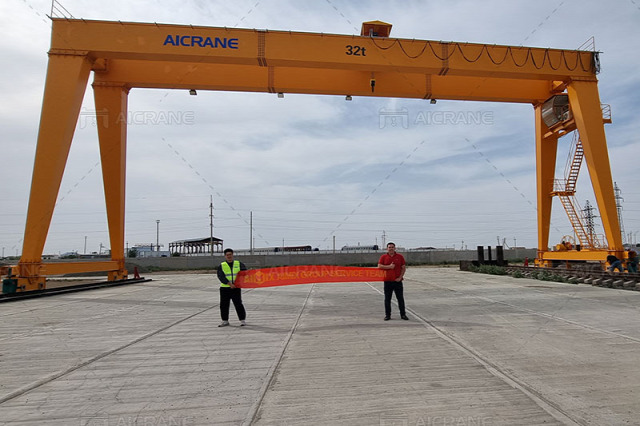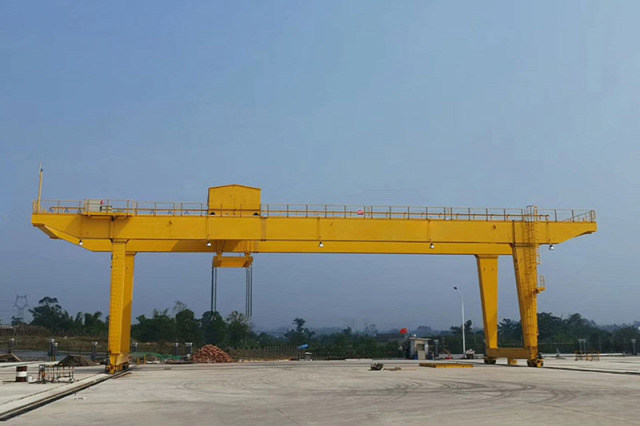Reducing energy consumption in a 30-ton gantry crane is crucial for improving operational efficiency, lowering costs, and minimizing environmental impact. By implementing energy-efficient technologies, optimizing crane operations, and conducting regular maintenance, businesses can significantly cut down on power usage without compromising performance.

Factors Affecting Energy Consumption in a 30-Ton Gantry Crane
1. Crane Design and Structure
The design and materials used in a 30 ton gantry crane significantly influence energy consumption. Lighter, high-strength materials reduce the overall weight, decreasing the power required for lifting and movement.
2. Motor Efficiency
The efficiency of the crane’s motors determines how much energy is required to operate. Low-efficiency motors consume more electricity and generate excess heat, leading to increased power wastage.
3. Operational Load and Duty Cycle
The working load and frequency of operations impact energy usage. Continuous heavy-duty operations require higher power input compared to intermittent or light-duty usage.
4. Control Systems and Automation
Advanced control systems optimize energy usage by reducing unnecessary power consumption. The implementation of variable frequency drives (VFDs) and smart control systems can improve overall efficiency.
5. Environmental Conditions
Wind resistance, humidity, and temperature variations can affect crane performance. For example, strong winds increase resistance when moving loads, requiring more energy to operate.

Strategies to Reduce Energy Consumption
1. Use High-Efficiency Motors
Switching to high-efficiency motors can significantly reduce power consumption. Energy-efficient motors generate less heat and require less power to achieve the same output, thereby lowering operational costs.
2. Implement Regenerative Braking Systems
Regenerative braking captures and reuses energy typically lost during braking. This recovered energy can be redirected to power other components or fed back into the grid, reducing overall energy consumption.
3. Upgrade to Variable Frequency Drives (VFDs)
Installing VFDs allows for better speed control of the crane’s motors, reducing energy waste during acceleration and deceleration. VFDs enable smooth operation and prevent sudden power surges.
4. Optimize Crane Operations
Reduce Idle Time
Keeping the crane idle unnecessarily leads to wasted energy. Implementing automated shut-off systems can help reduce power usage when the crane is not in use.
Load Optimization
Efficient load handling minimizes excessive energy usage. Ensuring proper load balancing and avoiding unnecessary lifting operations can save power.
Route Planning
Minimizing unnecessary crane movement by optimizing travel paths and lifting sequences can reduce energy consumption.
5. Regular Maintenance and Lubrication
Inspect and Maintain Motors
Regularly servicing crane motors ensures they operate at peak efficiency, preventing energy losses due to wear and tear.
Lubricate Moving Parts
Proper lubrication reduces friction between moving parts, lowering resistance and decreasing power consumption.
Check Electrical Systems
Regular inspections of electrical connections, wiring, and control systems can prevent power losses due to faulty components.
6. Use Energy-Efficient Lighting and Accessories
If the crane operates in low-light conditions, replacing traditional lighting with LED lights can reduce energy consumption while improving visibility and safety.
7. Implement Smart Energy Management Systems
Real-Time Monitoring
Installing energy monitoring systems allows operators to track energy usage and identify areas for improvement.
Automated Load Control
Smart load control systems can adjust power usage based on real-time requirements, optimizing efficiency.
8. Consider Renewable Energy Sources
Using renewable energy sources such as solar panels to supplement power for crane operations can significantly reduce reliance on grid electricity.
Conclusion
Reducing energy consumption in a gantry crane for sale requires a combination of efficient equipment, smart operational strategies, and regular maintenance. By implementing high-efficiency motors, regenerative braking, VFDs, and real-time monitoring systems, businesses can achieve significant energy savings while maintaining optimal performance. Investing in energy-efficient solutions not only lowers operational costs but also contributes to a more sustainable industrial environment.

